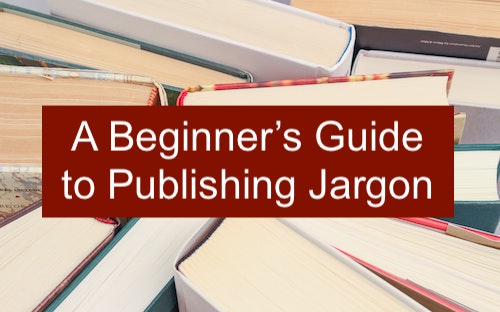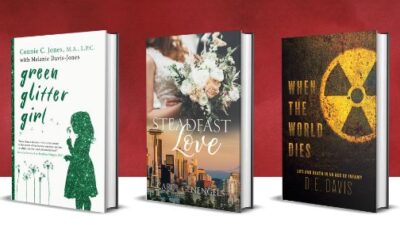By Jori Hanna
Publishing, like any industry, is full of its own jargon. When you’re first getting started, knowing a few of these key phrases and acronyms may help you get past those first stages of confusion.
ARC — Advance Reader Copy
This is an early version of the book in either PDF or bound form distributed to readers and endorsers for review. It is often not the final version and may have grammatical or formatting errors.
Comparable Titles/Comp Titles
When an author submits a book for publication, the publisher will often ask for comparable titles. These are 3-5 books published within the last 3 years in the same genre as the book being submitted that have done well or have similar themes. These help bookstores know where to shelve the finished book, and can be used in marketing materials.
Copy
In many marketing and writing scenarios, “copy” refers to verbiage and wording for a specific project or purpose. This is seen most often in the context of “back cover copy” or “marketing copy,” and refers specifically to the text accompanying graphics or designs.
Back Cover Copy (BCC), Jacket Copy, or Jacket Blurb
These three phrases are used interchangeably and all refer to the short, 2-3 paragraphs of text found on the back cover of a book. This copy is written with shopping readers in mind and designed to intrigue browsing readers in the story without giving everything away.
Synopsis
When a publisher asks for a synopsis, they’re asking for 1-2 pages that tell the whole story of the book, start to finish. All important plot points and character arcs should be included in the synopsis, as this is often used internally to help members of the publisher’s team know how to create materials for author use or marketing use when those team members cannot read the book themselves.
Blurb
This is a small snippet of text—usually 3-5 sentences in length—used for marketing materials. It can be an endorsement, a pitch, or a teaser, but it is almost exclusively used to sell books.
Review
Reviews come in two different forms—reader reviews and professional reviews.
A reader review occurs when someone reads the book and chooses to post about it, often online but sometimes in print. These reviews are often posted on blogs and social media (such as Bookbub, Goodreads, Instagram, and Facebook) or can be posted on retailer websites (such as Amazon, Barnes and Noble, Kobo, Apple, Target, etc.). This can be as simple as “I liked this book!” or as complex as a synopsis and an exploration of what was done well and what may need some work.
A professional review (or sometimes, a Trade Review) occurs when a major book publication such as Kirkus Reviews, Foreword Reviews, New York Review of Books, a newspaper or a magazine receives an ARC from the publisher and is paid for an honest review and visibility on their platform. These reviews can often include pull quotes that are used as endorsements, but it is not a requirement as the nature of a review is an honest reflection of the work.
Endorsement
Before the book is published, ARCs are often sent out to notable people in the related field, whether these are other authors who have successful and well-known books in the genre or professionals in the field related to the memoir or self-help book being published. These well-known people agree to read the ARC and provide a blurb.
Author Photo
If your book is accepted for publication, you will need to provide an author photo. This is a high-resolution photo of yourself and is often more casual than a professional headshot (we recommend not having a studio shoot) but more professional than a selfie. Find the middle ground where you are both approachable and friendly, in business casual clothing, the background is not too dark, and there are no harsh shadows across your face.
This photo should look good in both color and black and white, and you should feel confident in this photo, as it will be the one printed in your book or on the back of your book and used in all of your marketing materials, as well as distributed to interested media sources for use on their social media, in printed magazines or newspapers, or online.
A good author photo is very similar to a good high school senior photo. Do not include anything that distracts from you as a writer, but do showcase your personality.
The Editing Process
There are three main types of editing, and they’re all a little different.
Developmental and Content Editing
This is the first phase of editing any book needs to go through. No first draft will ever be perfect, and it is the job of a good developmental editor to help you, the author, bring out the best of your book. This round of edits will be focused on character, plot, organization, and logical flow. This is the stage of editing when an editor may make comments on chapter organization, character believability, and historical accuracy. They may also suggest rearranging chapters to better tell the story or introduce concepts and ideas in a more logical order, as they will be coming to your book from the perspective of a reader, someone distant from the book. They can ask questions that may seem obvious to you but this may cause you to explain the things you need to explain better for the sake of the reader.
Copy and Line Editing
At this stage of editing, an editor is no longer focused on big picture edits. This editor is focused on syntax and grammar, going through the manuscript with a fine-tooth comb to help guarantee that the final product has as few errors as possible.
Proofreading
After a book has been typeset and formatted for print, a proofreader will read through this early version and check for any new grammatical errors that may have been introduced when the typesetter formatted the manuscript from the copy editor. This is usually the final stage before the book goes to print.
Parts of a Book
All books have three main parts—the front matter, the main content, and the back matter.
Front Matter
The front matter is everything that comes before the book begins. This is usually the Title Page, Copyright Page, Introduction, Foreword, and Dedication. Not all books have all of these things, but if a book has these things, they usually come before the main content and are included in the front matter.
Back Matter
The back matter is everything that comes after the book ends. This is usually the acknowledgments, preview chapters for the next book in the series, an appendix, index, or glossary, about the author, and about the publishing house.

